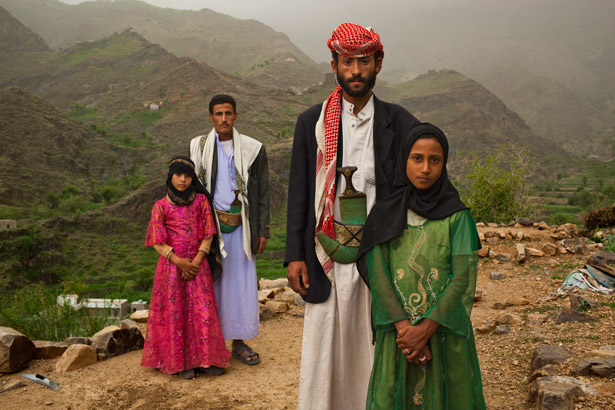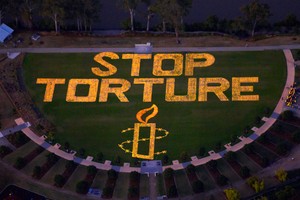It was recently reported that an eight year old child bride in Yemen named Kawan died on her wedding night due to sexual trauma caused by her forty year old husband. Kawan’s tragedy reminds us of one of the most pressing issues for women’s rights in the Middle East and Asia regions – the ongoing practice of child marriage. In a 2006 survey, Human Rights Watch reported that 14% of girls in Yemen are married by the time they reach 14, and 52% of girls are married by the time they reach 18. Suna University confirmed in a 2005 study that in some rural areas it is not uncommon for girls as young as eight years old to be married to men twice their age. With the lack of adequate legal structure in Yemen, and in other countries in the Middle East, addressing the problems of violence, inequality, and discrimination against women remains an almost impossible challenge, but one that the west is determined to pursue.
Yemen’s parliament offers young brides protection under Article 15 of the Personal Status Law, which prohibits sexual intercourse until a girl reaches puberty. Given the intimate nature of the prohibition, it is almost impossible to police and properly manage this statue; the law also does not protect against physical and emotional coercion. It is important to note that Yemen’spersonal status law allows girls to be married at any age, which further discriminates against females, because it is not necessary to require their consent for marriage. Members of Yemen’s official parliament agree that a ban on child marriage is crucial for securing women’s rights and equality, but some barriers remain. A small, yet powerful, conservative group in Yemen opposes this modern change because it contradicts their interpretation of sharia, or Islamic law.
Child marriage is directly related to pervasive social conditions, and it is likely to occur in conflict, war-torn, or poverty-stricken states. Human Rights Watch conducted a 54 page report that interviewed Yemen citizen’s about child marriage. One interview suggested that parents agreed to wed a young girl to another family to reduce household needs and to attain dowries.
[captionpix align=”right” theme=”elegant” width=”300″ imgsrc=”http://natoassociation.ca/wp-content/uploads/2013/09/child-bride_wxojk_50.jpg” captiontext=”Child Bride”]
Countering a Broad Range of Issues
Even in the absence of severe sexual abuse, the consequences of child marriage for young girls are emotional and physically damaging. Many girls become pregnant and have no access to reproductive rights or education, in addition to having little control over the number of children they give birth to. It has also been reported that girls are removed from school at a very young age in order to take on the duties of a wife. Without access to education, young girls are left helpless and they become ignorant of possible avenues of support.
Violence Against Women (VAWA), an organization based in the US, directed the secretary of state to implement a plan that would prevent child marriage and promote the empowerment of girls that are at risk of early marriage. According to VAWA, improving life for females across the globe is a central concern for US foreign policy under the Obama Administration. Even Yemen’s human right minister, Huriya Mashhoor, recognizes these issues and plans to advocate for the minimum age of marriage to be set to 18.
There is no legal definition of what constitutes a child, and this makes constructing restrictions on child marriage a challenge. Even in places where legislation exists, it is not always followed. As an example, a recent study by Tafts University shows that child marriage in Afghanistan is common even though the minimum legal age of marriage is 16. It seems that the only way to conquer such a violent and problematic cultural issue is to pursue a plan of action, whereby young children and women are educated to understand the consequences of marrying young. Plan Canada, for instance, aims to raise awareness on child marriage, to keep girls in school, as well as teach them about gender inequality. The Too Young to Wed campaign, organized by the UN, works with governments in Middle Eastern communities to create programs that address the needs and vulnerability of married girls.
Many existing initiatives to combat child marriage focus on programs that educate girls and women on the consequences of marrying and childbearing at a young age. While these efforts are admirable, they need to be supplemented with educational tools for men and elders in these communities. The success of these programs requires implementers to have a good sense of the significance of child marriage in Middle Eastern cultures. Westerners must ensure that they are taking the geographical, anthropological, and political dimensions of child marriage into account. Also, it is important to not generalize the cause of this phenomenon by linking it to a negative and inaccurate depiction of the Islamic religion. For example, it is worth noting that most child marriages take place in small rural villages that are often self-governing, and do not adhere to national laws. In these cases, understanding community norms is crucial to constructing an effective educational program.




